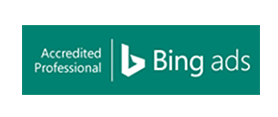If you’re a small business in 2017 and you haven’t got a website yet, you’re missing out – and don’t even get me start on your small business SEO!
More and more people are turning to the internet to plan their next purchase, and if you aren’t there when people are looking for your service, you are losing potential business. However, there are plenty of Content Management Systems available, so you do not have to invest hundreds of thousands to get a website that successfully notifies people of your presence on the internet.
Actually planning what you want on your website isn’t as easy as you might think, as it isn’t just throwing up a website and watching the enquiries roll in, you need to think about what the objective of the website is. Do you want people to contact you? Do you want people to buy products off your website? Do you want something completely different altogether?
Although most websites tend to have unique objectives, there are elements that every site should have:
Contact Us Page
No matter what your objective is, a contact form is a good start. Not only does it let people ask you questions or request services, it also lets them know that there’s a human being running the business and the site isn’t just sitting there for the sake of it.
Contact forms are usually quite simple and include name, email address and message, but some businesses tend to add more form fields in to gather more information about the sender. Although this may seem like a good idea, when someone sees a huge form this may scare them away. If you have to have a long form, a possible solution to this is to not make every form field mandatory and just make the ones you actually need mandatory.
In addition to the form, you should add alternate ways of letting people contact you, such as an email address or phone number. You should also add your full location address so people know where you are. You could even add an interactive map which shows where you are, this is very easy to do as it’s just an HTML code embed from Google.
About Us Page
Although a contact form may let people get in touch with you, an About Us page lets people know who’s running the show. You may want to add some history about the business, or maybe a list of people who work there and their roles.
Unfortunately, for best results, you’re going to need to get a photo of yourself so that people will trust you. You may also want to get photos of your team taken as well, and some photos of the building you operate in if your business usually requires people to make a visit. To go one step further, you should add a list of credentials and places you’ve been mentioned, such as authoritative events or websites.
Not only does this page show who you are, you can display your achievements, and a website with an About Us page is a lot more trustworthy than one without.
Different Forms of Media
What I’m talking about here is not just let your website be endless walls of text, but add some images to interest people or let them know what you sell. If you’re struggling for ideas on what images you want to show, there are plenty of websites that offer free stock photos to use on your website, such as:
You could even add a video for people to watch, but make sure that it is a video that you are allowed to use and you haven’t stolen someone else’s content. This goes for images too; some premium stock photo sites come with quite hefty fines for using their images without consent.
Products/Service and Location Pages
When people visit your website, they’re usually looking for something in particular, usually, the services you offer and the locations you operate. If you’re planning with SEO in mind, you should create these pages separately so that you rank for multiple search terms.
For products and service pages you should be clear in what you provide. If you are selling products you may choose to have an e-commerce website where you can sell products online, a good CMS being Shopify. If you provide a service you should have a unique page for each service so that visitors can go straight to the service they’re looking for instead of having to skim your website to find what they want.
For location pages, it would be best if you had a physical building in that location so you could add photos of your building, how to contact that branch, and maybe how long you have been operating in that area. However, this isn’t a necessity and you could just have some text detailing the services you provide to that area.
Remember, each page should have unique content. This is not only because the reader might read duplicated text, but also because Google can penalise your website if you have large amounts of text copied all over your website.
Mobile-Friendliness
This one isn’t so much about the actual content of the website, but more about whether people can use your website on mobile. If you’re using a CMS such as WordPress and you’re using a good theme, this is usually a given. However, if you’re planning on using a bespoke developer then you should plan how your website looks on mobile as well.
This isn’t just resizing the text so that people can read it on mobile, you should also think about the technicalities of having a mobile site, such as having Flash elements on your website. The problem with Flash is that it doesn’t work on mobile, so mobile users aren’t able to see those elements. Also, you should avoid having lots of videos on your mobile site, as this could slow the website down.
The Next Step
I’ve run through the basics of a good website, now you should think about the technical factors of your website such as getting it nice and secure, making sure that enquiries aren’t getting lost, and that it isn’t painfully slow. I’ve written a blog post about the technical factors you need if you’re planning on using WordPress, which I recommend. Even though WordPress sells itself as a blogging platform, many businesses use WordPress, such as The New Yorker, Marks and Spencer and even Snoop Dogg.
If you are a small business looking to get online, check out our new small business website package or get in touch.







